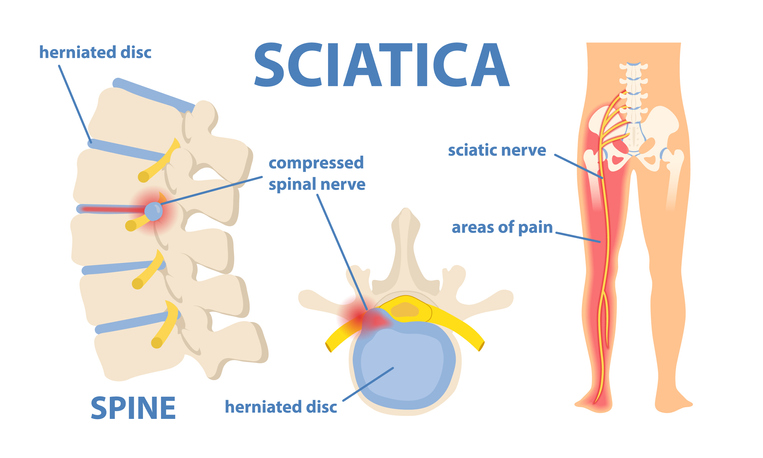Pain
Alternative and Complementary Treatments for Sciatica

212 people found this helpful
Print
Share
Save
What is sciatica?
Sciatica, or sciatic nerve pain, refers to pain that occurs when the sciatic nerve root in the lower back becomes compressed, irritated or inflamed. Sciatic nerve pain radiates from the lower back, into the buttocks, and down the legs. It is most commonly the result of a herniated or slipped disc, bone spurs, or spinal stenosis.
Alternative and complementary treatments for sciatica
In addition to conventional treatment options, alternative and complementary treatments may also help ease pain associated with sciatica. Examples of alternative and complementary treatments include the following:
- Biofeedback is a technique in which an individual can learn to control specific bodily functions, such as heart rate, breathing, muscle contractions, and brainwaves. This can help an individual learn to relax muscles or reduce pain.
- Acupuncture is an ancient medical practice most commonly used to reduce pain and stress levels. The technique is performed by a licensed professional and involves inserting fine, thin needles into the skin at specific points of the body. The strategic placement of the needles stimulates muscles, nerves and connective tissues. This stimulation also increases natural pain-fighting chemicals, while boosting blood flow in the body.
- Massage therapy can help reduce muscle tension, pain, and stress. A trained professional manipulates the soft tissue, including muscles, tendons, and ligaments, with varying degrees of pressure and movement to increase mobility and relieve pain. Blood circulation is also improved, which promotes the body’s healing process.
- Chiropractic, or spinal manipulation, is conducted by a licensed chiropractor to improve the alignment of the spine, decrease pain, and improve functionality. If the underlying cause of sciatica is a herniated disc or spinal stenosis, chiropractic treatment may be beneficial.


















